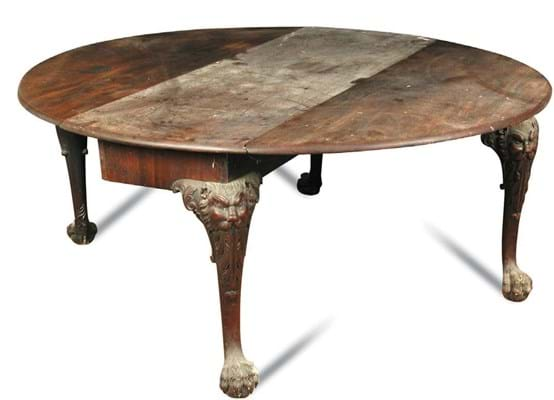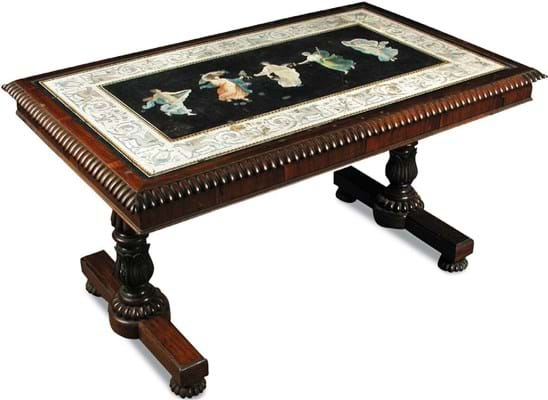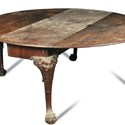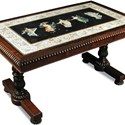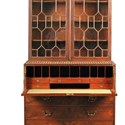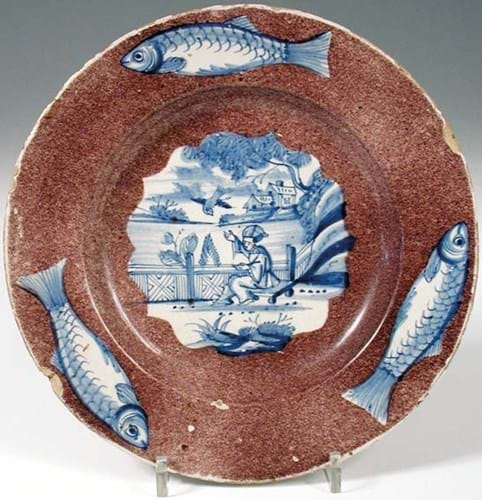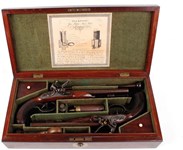Cambridge auctioneer Luke Macdonald was speaking after the quarterly fine sale at Cheffins (22.5% buyer’s premium) on September 13-14 and he had statistics – including four five-figure bids – to back up a claim you don’t hear every day in challenging times.
But then it’s not every day one is invited to look over a near-derelict boarded-up country house and find a wealth of material inside.
The house was Little Barford Manor, a sprawling, architecturally undistinguished home on the Arlington Estate in Bedfordshire. The family had moved out more than 20 years ago to live in the dower house.
Market freshness
“It had everything an old-fashioned country house sale would have had,” said Macdonald. “Top-quality pieces, untouched, unrestored and absolutely fresh to the market, and it attracted the A to Z of top London dealers.”
The contents from Little Barford amounted to 110 lots, contributing £280,000 to the 725-lot sale which enjoyed an old-fashioned country-house selling rate of 90%. Among a cache of 16th and 17th century oils were two previously undocumented portraits by Sir Peter Lely (also see Art Market section).
Top seller was a Regency mahogany dining table in the manner of Gillow with turned and lapit moulded legs and claw feet. With three extra leaves, it was 19ft 8in long x 5ft 7in wide (6.07 x 1.69m) and “easily the largest table I have sold in 30 years of auctioneering”, said Macdonald.
Estimated at £7000-10,000, it was competed for by two dealers and sold to an overseas buyer at £55,000.
The table could easily seat 20 people and a set of 16 Regency chairs seemed a natural accompanying purchase. In the manner of Gillow – a direct copy of the set the Lancaster firm made for Hackwood Park, Hampshire, in 1813 – they had pierced foliate scroll-top rails, buttoned leather waisted backs and overstuffed seats and gadroon moulded legs.
Estimated at £3000-5000, the set sold at £15,000.
Earliest piece
The earliest piece of mahogany on offer was a George II Irish drop-leaf table with foliate carved cabriole legs, lion mask shoulders and hairy paw feet. Dating to c.1740, it ranks among the first generation of mahogany furniture.
The 5ft 7in (1.73m) long table showed signs of long incarceration at Little Barford. The drop-down ends had been protected to some extent but the central leaf was very faded and scratched, plaster falling from the ceiling having made its mark.
However, it was an important piece and always destined to exceed the £3000-5000 estimate – a London dealer acting for an overseas buyer took it at £54,000. Add the buyer’s premium, the agent’s fee, restoration costs and the shipping bill and the price people will pay for fine old mahogany comes into focus.
The mahogany momentum – that reflected the inclusion of some very good material rather than any great upsurge in the market for ‘brown’ – was not confined to the Little Barford material. Also on offer was a 7ft 6in (2.30m) tall George III secretaire bookcase.
“It was one of the finest I’ve seen in years,” said Macdonald, who gave it a conservative £2000-3000 estimate to take in current conditions.
The bookcase sold at £16,000 to a Cotswolds dealer who doesn’t usually trade in furniture and may have been taking the chance to acquire a superb piece for himself.
One of the most eye-catching offerings from Little Barford was a manner-of-Gillow Regency rosewood library table.
It was decorated with a painted ‘Grand Tour’ marble top with five dancing Bacchantes copied from Cicero’s villa at Pompeii and a broad border with sphinx and arabesques.
Estimated at £3000-5000, the 3ft 5in (1.36m) long table sold at £7500 to the dealer who bought the 16 chairs.
Escaping thieves
Over the long empty years, Little Barford did attract the attention of thieves. Obviously, none but the most ambitious would have thought of taking the 19ft dining table, but it was a welcome surprise to see that small treasures had survived their predations.
There was, for instance, a set of four George IV silver entrée dishes and a pair of 18th century Continental silver strawberry dishes.
The 12in (30cm) wide entrée dishes and covers by William Eaton, London 1822, engraved with armorials, went at a mid-estimate £4400.
Heavily repaired, the 8in (20cm) diameter strawberry dishes engraved with armorials and Prest d’Accomplir, were estimated at £300-500 but sold at £3000.
A pair of 2ft 9in (85cm) tall, late 19th century bronze oil lamp torchères fashioned as palms surmounted with a stork took a four-times estimate £2200.
“Thieves seemed to have been just boys looking for alcohol,” said Macdonald.
Surprisingly, they overlooked the contents of the wine cellars which, along with lesser furniture such as wardrobes and presses, were being offered at Cheffins this week (September 28).
English pottery
Even without the Little Barford contribution, the September 13-14 sale would have been rated a success.
First lot up was a 9in (23cm) early 18th century English (probably London) delft plate, decorated with a Chinese scene to the centre and three carp to the rim. Estimated at £100-200 it made £1500.
A Prattware tea caddy with a moulded portrait of George III and inscribed God Save The King 178* and with a 1782 coin inset into the silver metal lid left a £100-200 estimate behind selling at £1200.
Among the silver, two tea caddies stood out, one Hester Bateman, London, 1786, the other by Robert Hennell, London 1779. The vendor had bought both in New York in 1980 for £1850 and £1250 respectively.
Each doubled its mid-estimate but could hardly be said to have been a good investment. The serpentine-bodied, bright-cut, 6in (16cm) tall Bateman caddy with an armorial finial and engraved festoons took £2600. The similarly engraved 4in (10cm) tall Hennell oval caddy with vase-shaped armorial finial made £2200.
Among the clocks a 6ft 1in (1.87m) tall 19th century mahogany longcase regulator signed E Dodds, Blyth to the silvered dial took a double-estimate £3400.
More of a surprise, even allowing for the fashion for small timepieces, was a 3½in (9cm) tall clock in a rectangular ormolu case inset with malachite cabouchons and agate lozenges. It was unsigned and undated in the catalogue and the movement had not been examined but against a £300-500 estimate it sold at £2200.


